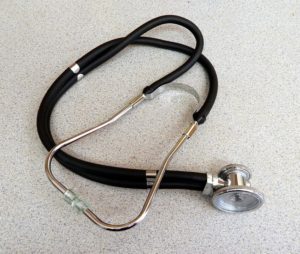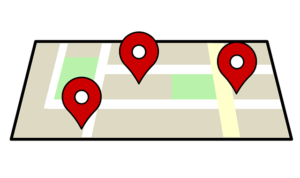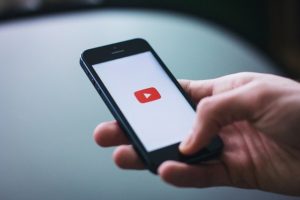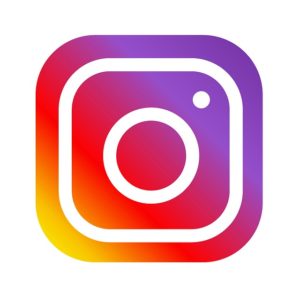Case Study For Medical Practice Search Engine Optimization, YouTube Marketing, Pay Per Click, Facebook Ads, And Lead Generation

This post will show the case study results of a multi-month campaign to help a medical practice (in this case a women’s health center in the Midwest United States) increase website traffic and phone calls. The doctor wanted to target women, with a special emphasis on those seeking help with all things related to pregnancy. This particular area of the country also faces a significant challenge with women in child-bearing ages who are currently using or struggling from the withdrawl symptoms of opioid and painkiller use before/during/after pregnancy.
The latter is important to know as it was part of the YouTube video ad campaign targeting. The goals of course were to get more immediate phone calls; but the goals also were to improve search engine rankings and increase social awareness of the doctor’s multiple office locations within roughly 20-30 miles of each other.
SEO For The Medical Practice
Several services are performed at his center including OB/GYN services, mammograms, pregnancy care, and much more. He also performs specialized women’s health surgical procedures.
The SEO efforts worked significantly well for the searches done in/for the towns where he had his various office locations. Here are just some of the Google ranking results (“SERP’s”) for many of his desired keywords:
- OB GYN CITY 1 (#1 in the Maps rankings and #3 in the organic results)
- OB GYN CITY 2 (#1 in the Maps rankings and #3 in the organic results)
- pregnancy care CITY 1 (#1 in the Maps rankings and #1 in the organic results)
- pregnancy care CITY 2 (#2 in the Maps rankings and #2 in the organic results)
- women’s health care CITY 1 (#1 in the Maps rankings and #1 in the organic results)
- women’s health care CITY 2 (#1 in the Maps rankings and #1 in the organic results)

If you are making decisions for a medical practice and seek guidance on how to gain exposure to your digital/online web properties which have your practice’s contact information (not just your website) then you likely want to know where situations were not as “rosy” or didn’t work out like expected. That is a healthy (no pun intended!) way to approach any case study you encounter, like the one you see on this page.
So what went wrong?
There are 10 towns nearest to his 3 main office locations which have median household income (according to Census data) of $50,000 or more. While his website mentioned those towns, he did not have unique pages set up for each of those desired towns – let alone those unique pages having unique content and optimized SEO tags specific to that town. This hurt his SERP’s (especially in Google) for the same keywords mentioned above.
Here are the results for two of those nearby, higher-median-income towns:
- OB GYN HIGH INCOME TOWN 1 (YouTube video ranks #4 and “Areas Served” page of website ranking #7 organic)
- pregnancy care HIGH INCOME TOWN 1 (YouTube video ranks #2 and “Areas Served” page of website ranking #4 organic
- women’s health care HIGH INCOME TOWN 1 (#1 in the Maps rankings and #1 in the organic results)
- OB GYN HIGH INCOME TOWN 2 (no rankings anywhere on page 1 of SERP’s)
- pregnancy care HIGH INCOME TOWN 2 (website’s “Areas Served” page ranking #10 in organic results – bottom of page 1)
- women’s health care HIGH INCOME TOWN 2 (no rankings anywhere on page 1 of SERP’s)
TAKEAWAYS FOR SEO FOR THIS MEDICAL PRACTICE
There were several things which could have been done better to help him rank in the organic rankings in the SERP’s for the nearby towns. These include, but are not limited to:
- Build out high-income town-specific pages, each with unique content on them specific to that town. Then optimize those new pages for relevant keywords and the town name
- Create more video content, optimized specifically for that town, and embed it on the new town-specific page
- Geo-tag stock photos (or photos he provided of his practice locations) and upload them onto the new specific town page
- Double check with Google Search Console and Bing Webmaster Tools for any errors or other issues preventing these new pages from getting indexed and crawled
- Create custom Google My Maps with driving directions from the specific high-income town to nearby landmarks, including driving directions to his office locations and more
- Get testimonials from patients in the specific town and embed on the new town-specific page
- Possible schema markup for that particular town’s new page
- Alt text with the specific town for any image embedded on that page
- List of services for patients in that specific town such as pregnancy support groups, etc.
Had the above been done then he likely would have seen an increase in relevant website traffic from the towns he wanted. Even if the town specific pages had a lower conversion rate than the rest of his website (hopefully not, but just staying conservative for this example) then he still would have noticed an increase in phone calls from the higher-income towns. This is because the volume of relevant traffic visiting his website and/or videos (or medical/doctor directory listings) which would be ranking well would be so significant that even a lower-percentage conversion rate (calls or emails) would have generated new patient appointments.
We also could have added more outbound links on his new town pages which would have linked to his directory pages on Healthgrades.com, Zocdoc and other places with favorable reviews.
Google My Business (Maps) Results For This Medical Practice
This was very favorable for the 5+ mile radius around each of his office locations. The statistics and metrics given to us for the Google My Business listings (sometimes mistakenly referred to as Maps results/analytics) for his three main office locations showed several favorable benefits over a 3-month period:
- Nearly 900 phone calls coming to his two main phone numbers which he used (the same two phone numbers applied to each office location as he had a centralized phone service). It is unknown how many spam/telemarketer calls came in, but even if it was 2/3 of the time (being vastly exaggerated for this example) this would mean he still received 300 phone calls (1/3 of the 900) from possibly legitimate patients. Of course some would be for current and previous patients, but he still saw an increase in new patients as a result of his favorable Maps/My Business results in the “Snack Pack” (3-pack) of maps results showing for the local Google searches.
- We didn’t see as dramatic a pickup in calls from Bing, but there was a steady flow of calls each month coming from Bing
- We didn’t see many click-to-call metrics coming from Yelp, but this was because we didn’t emphasize Yelp that much during this project
- He saw several hundred “clicks to website” (as defined inside the Google My Business analytics/metrics reporting) and several hundred clicks to get directions to his various office locations.
- He received some reviews on his Google My Business/Maps locations. While he received several favorable reviews on Facebook, not as many went to Google to leave positive reviews. This is an area where he can improve upon in future months
Additionally, his two main office locations (of his 3 in total) showed a dramatic increase in the generic searches where his listing appeared, versus just “branded” (practice name) or individual name (such as his name of “Dr. XYZ”) queries. This means his various business listings, especially for the two main offices, started to gain significant increases in awareness for searches/queries being done within a 10 mile radius of each location for phrases like:
- “ultrasound near me”
- “pregnancy doctor CITY 1”
- “nearby mammogram facility”
- etc.

So why did this happen? What was done right?
Several things were done to help him improve:
- Double-checking for correct category, business address, hours of operation, etc.
- Adding all of the services, surgery types, and other benefits of his practice
- Including links to his listings on Healthgrades.com and other medical professional directories
- Geo-tagging the images and then choosing the correct category after uploading into the GMB listing
- Same for raw video files (uploading the raw files, not just the YouTube videos)
- Sharing content on the updates as “micro” posts (like a mini-blog) and value-added content
- Doing link building and social sharing of the micro-website (a business.site URL) which automatically comes with all verified GMB listings
- Intra-linking the Google-provided properties with other Google assets
- Other advanced GMB tactics
WHAT ELSE COULD HAVE BEEN DONE?
There were several additional things which could have been done to get him even more exposure, thus more prospective patients:
- More geo-tagged photos and raw videos, especially for the advanced services and surgeries he offers
- More quality citations, especially from local county-specific and medical-specific business directories which would permit the addition of his practice’s name, office address, phone number and website
- Building out the high-income town-specific new pages and sharing them on the GMB updates
- Taking the individual URL’s (links) for each post/update we made and sharing those links on high-authority web 2.0 properties like a Tumblr blog themed about women’s health. This would have been even better had we claimed a previously-used high-SEO-authority Tumblr name for the blog and re-purposed it to be about women’s health!
- Using even more of the GMB advanced tactics
- More link building to the micro-website
- More Google business reviews with the names of the towns and/or services provided in the text from the individual reviewers
YouTube SEO, Advertising And Other Marketing For Medical Practices
This was as close to a “home run” as we could get for the practice, especially for the limited budget we had regarding YouTube. Like many doctors, he spent way too much on the videographer services (worrying about lighting and the staff worrying about makeup and wardrobe issues) rather than the big concern which was syndication and exposure to his video content.
Earlier in this post you read that his YouTube videos ranked well in Google organic results (not just YouTube results) for desired local keywords. The videos which ranked were just 30 second slide show videos with some stock music and just using stock photos and his logo! While we tried to help him see the bigger picture, vanity and ego played a role here. He only provided less than $100 for YouTube ads, but we maximized the exposure for what we were allocated; and had he spent less on videographer concerns – and more on getting his video content seen by the right audiences (e.g. women ages 18-24 looking up other pregnancy-related videos in YouTube within 10 miles of each office location) then his phone likely would have been ringing even more!

Nonetheless, here are the results from the YouTube marketing he did:
- Ranked #1 or #2 organic (in YouTube searches) for almost all of his desired keywords for the towns where he has office locations
- Ranked #1 or #2 organic (in YouTube searches) for over 50% of his desired keywords for the 10 higher-income towns he wanted which were not the towns in which he has office locations
- Has generated nearly 2500 views on his channel across all of his videos (slide show videos, him speaking on video, his staff speaking on video, and testimonial videos). Virtually all views came from the counties where he wanted to attract new patients
- The 2500 views does not even factor in the views of the raw video files in his Google My Business/Maps listings, nor does it factor in views of his videos when uploaded as raw video files on the Facebook pages for each of his office locations. The number of “views” factoring those would be over another 1500 views. The 2500 views is just restricted to views in YouTube either organically, as a paid ad/view in YouTube (targeting women 18-35 in his desired counties), and when the video ranked well in main Google searches.
WHAT ELSE COULD HAVE BEEN DONE?
The big thing on which he “missed the boat” regarding YouTube is that he never did a thorough video of any kind (him speaking, animation character speaking, slide show video, etc.) talking about the very difficult topic of women dealing with opioid and painkiller problems before, during or right after pregnancy. The reason why from a marketing standpoint (besides the desire to help these women and innocent babies who would be dealing with all forms of their mothers’ opioid problems) this was a missed opportunity was:
- We could track that women ages 18-24 in his 4-5 desired counties were watching other YouTube videos on the topic of opioids & pregnancy
- Many of those videos were on channels which permitted ads to run (typically a video ad before the main video started)
- Those ad spot opportunities were very inexpensive, sometimes as low as 2-3 cents per “view” (where a “view”, in YouTube ad’s definition, is 25+ seconds of watch time when running as an ad)
This means that if he gave us just another $100 to spend, plus just one video speaking directly on the topics of maternity and opioid challenges, then the doctor may have been able to:
- Get upward of 3000 views (25+ seconds or more of watch time per “view”) from women ages 18-24 in his desired geographic areas. This would be calculated with a “view” costing him 3 cents, then he would have spent $1 to get 33 “views”. A $100 ad spend then could have generated 3000+ “views”, possibly more.
- We could have targeted specific keywords, entire YouTube channels, or even just specific videos which permitted ads to run in front of them like this one: https://www.youtube.com/watch?v=DbeVhMye9NQ
His video also could have been added to a new YouTube playlist on the topic, with his video at the #1 spot (plus a description including a link to his website and phone number), and several videos from authoritative news and medical YouTube channels confirming the issues regarding opioids and pregnant women.
That new multi-video playlist (with his video appearing first) then could have been:
- Embedded on his website pages
- Shared on the Google My Business updates/posts section
- Shared on his Facebook pages
- Received low-cost paid traffic via Google Display Network ads (an advanced technique here)
- Included inside a press release about the topic
- Sent to relevant prospective patients via email
- Several other ways to show that his words in an opioid-specific video were then being backed up by authoritative other videos (like the PBS News Hour link mentioned earlier)
Nonetheless, his YouTube efforts produced solid results and still are ranking well to this day.
ONE EXTRA BENEFIT TO YOUTUBE ADS
Unlike most other forms of online digital paid advertising, YouTube ads have an unexpected benefit! That is if you have the videos properly optimized before running them as paid ads in YouTube, then once the ad spend stops… you still may gain long-term benefit.
What does this mean?
In essence, the “views” (25+ seconds or more of watch time when running as an ad in YouTube) coming from the desired geographic area — which match the keywords for which you are optimizing the video — basically help your video(s) rank better in YouTube and, ultimately, Google for desired keywords. That is why his videos rank well in Google to this day for one of his nearby high-income town keywords. The paid ads in YouTube came from that town to his slide show video and, once the paid ads/views stopped, the video had gained enough “watch time” and authority to be deemed “authoritative” enough by Google to still rank well for those relevant town-specific keywords.
This is one of the reasons why we fought hard to focus on YouTube ads as much as (if not more than) Facebook ads. If the “homework” is done properly up front, then the amount spent on ads (views) could be less than Facebook ads… and you might get the long-term SEO rankings as an extra benefit!
Facebook Marketing And Ads
His Facebook marketing did okay, but his staff didn’t answer patient inquiries sent through Facebook either at all, or they were very slow to respond. This hurt his Facebook efforts to gain a ton of new phone calls as women in his area’s younger demographic (18-24) just seem to refuse to pick up the phone and make a phone call to book an appointment. Most chose to email or send a Facebook message.
Nonetheless, by sharing his videos and some helpful “social” content (like articles about what to do if you believe you are pregnant) and some Facebook ads, we were able to generate about 20-25 phone calls and inquiry appointments for him.
This wasn’t necessarily all that great, considering what could have been the case, but there was no active campaign to have his current and previous patients follow him on Facebook. That would have been the “seed” to grow the universe to whom he then could share content, with the intent of some of those first-phase followers sharing his “value added” content with their friends and followers. There were many missed opportunities, but at least the efforts generated new patients nonetheless.
Instagram, Yelp, Twitter, Tumblr And Nextdoor

None of these were implemented due to time and budget limitations. Still, each could have influenced many new prospective patients to call him for appointments as his practice offers a wide range of women’s health services for women of all ages.
Advanced software now can take the Instagram and Twitter and Tumblr platforms to new levels and each can benefit any medical practice across the country in customized ways. Yes, these social and review platforms even can have search engine optimization (SEO) benefits despite their not being typically associated with SEO or SEM.
In this doctor’s case, Instagram would have been terrific as so many women between the ages of 18-24 use Instagram in his desired geographic areas. Unfortunately, it is difficult for a third-party marketing service to “handle his Instagram” due to his state’s licensing agencies being stringent on content that is shared on social media. The content would have had to have been managed primarily by someone on his staff, and there was no willingness to do so by someone with a marketing mindset in his offices.
To clarify, the “marketing mindset” refers to someone who understands that (while staying compliant with state laws and overall levels of appropriateness for the audience) the goal is to grow the practice’s patient numbers. This would require the intelligent blending of any/all of the following:
- Choosing the right hashtags to use for Instagram posts. For example, at the time of this post (February 2020), the Instagram hashtag of #pregnancyannouncement has been used over 570,000 times (https://www.instagram.com/explore/tags/pregnancyannouncement/). Missing the boat on this hashtag and high-volume related hashtags (like #mothertobe and #amipregnant) could lose him valuable new patients from his area. This wouldn’t even factor in using local hashtags!
- Incentivizing previous patients to share/like the doctor’s Instagram posts. This does not mean a monetary incentive, but more of a sense of community and feeling welcomed by the doctor and his staff
- Choosing appropriate photos showing the overall good feeling his patients get when they arrive at his offices
- Posts helping with the emotions women feel when they experience any wide number of challenges related to unfortunate health news
- Attracting to the Instagram page the boyfriends, fiances and husbands in the geographic area to help them better understand women’s health so that they enhance their relationships and trust the doctor (and his team) to protect the health of the women they love
- When (and when not!) to comment on a patient’s Instagram post, and what to post on behalf of the practice – both from a sense of being appropriate as well as state licensing/compliance agency requirements
- Much more
RECAP
Thank you for reading this far regarding the case study. There were some solid “wins”, some “losses” and a few missed opportunities. This website name of “More Than SEO” was chosen for a reason, as you can see that much is required in today’s online marketing environment to grow a local business – especially a medical practice dealing with the high emotions and costs associated with one’s health.
In all, for the time expended and the ad budget given, we are happy with the results but know that so much more could have been achieved. Either way, you now have a case study showing that medical practice online marketing and SEO is much more than just choosing the color and design of your practice’s website, throwing on the site a few images, and running a few Facebook ads!
We hope that you have a better understanding of your own business model now in order to grow your practice.
FINAL THOUGHTS: TRUST

The biggest takeaway we want you to have is that marketing “trust” is now fragmented, even within the very same person you are trying to reach!
For example, if your practice was trying to reach women ages 18-24 in suburban America with a median household income of $50,000 or more then that woman has “fragmented” trust from a marketing perspective. By this we mean she likely:
- Doesn’t pick up the phone and call local businesses very often. She will be more comfortable initiating contact via Facebook or Instagram or email. Having her fill in complex contact forms on websites (while easier for you to manage) may not necessarily be in her best interest.
- Spends time with friends online via Snapchat and/or Instagram
- Won’t respond much (if at all) to local print advertising (e.g. local newspapers, flyers, and local print publications)
- Might be on Facebook, but may not respond to ads
- Will be watching videos of interest to her on YouTube
- Will be making lots of “near me” queries in Google, perhaps via voice searches (e.g. “OB GYN near me” or similar searches)
- May make home-related decisions on Houzz.com
- May consult boards on Pinterest for several ideas, especially anything inclined toward static images
- Will consult national websites for articles like those on Huffington Post or others
- Uses apps like Poshmark and other apps to make decisions to buy/sell items locally
- Will rely heavily on local reviews on Google, Yelp, Facebook, etc. before making a business decision or a decision regarding her health
- Will check the reviews not just of the practice but also the social media of the doctor himself/herself. That is why doctors now have to be more disciplined in their personal lives than ever before
- May not listen to any local news on the radio
- Likely doesn’t know or care about your local chamber of commerce
- Etc.
In previous decades local “trust” was restricted to word-of-mouth referrals, local newspapers, radio, community publications, chamber of commerce, phone book ads, local TV stations, and a few other “trusted” sources. The internet and social media and apps blew the door wide open so there now are many changes in how someone making decisions for a medical practice (typically in/above the age of 40) differs from someone a generation younger (18-24).
The big thing is to “get out of your own head” and how you make decisions; and, instead, get “inside the head” of the people you want to become new patients. Learn how they think, what they trust, and how they make decisions online. If you do that, stay humble with your marketing, and offer great service (thus generating a consistent flow of favorable patient reviews!), you should see an increase in your business in the coming months.
If you would like help for your medical practice or other medical-related business (ranging anywhere from compounding pharmacies to revenue cycle management to medical equipment) then contact us here:
Our Social Media